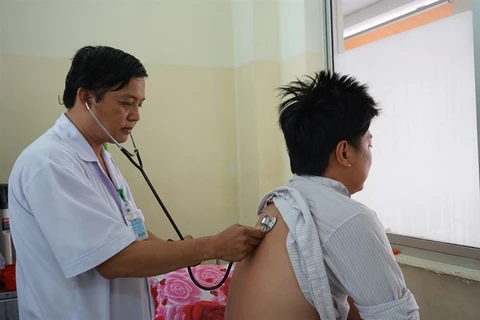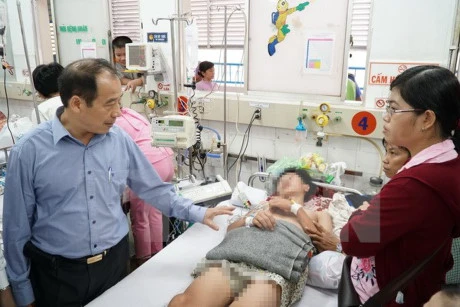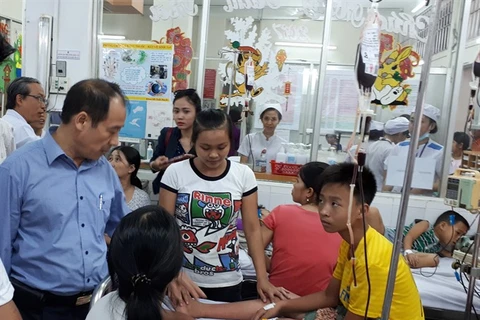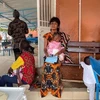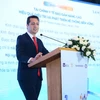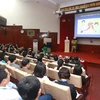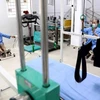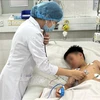 Spraying chemical to prevent dengue fever in Hoai Duc district, Hanoi. The MoH is taking drastic measures to control dangerous infectious diseases caused by extreme weather conditions. (Photo: VNA)
Spraying chemical to prevent dengue fever in Hoai Duc district, Hanoi. The MoH is taking drastic measures to control dangerous infectious diseases caused by extreme weather conditions. (Photo: VNA) Hanoi (VNA) – The Ministry of Health (MoH) is taking drastic measures to prevent and control dangerous infectious diseases spurred by extreme weather conditions.
At a press conference held in Hanoi on July 13, director of the ministry’s General Department of Preventive Medicine Tran Dac Phu said that 145 groups were set up to inspect the disease prevention work in localities and a campaign to kill mosquito larvae was launched in 39 cities and provinces across the country.
The health sector will promote supervision and early detection of disease outbreaks while giving timely treatment to patients to prevent infections. Along with increasing the number of people receiving vaccines, especially encephalitis and rabies vaccine injections, the sector also works to diversify supply sources to ensure sufficient vaccines.
The MoH recommends local people ensure food safety and hygiene, clean and disinfect frequently touched surfaces and promote hand washing with soap to prevent virus-based diseases. Parents must have their children vaccinated enough as scheduled.
Summer always sees complex developments of infectious diseases such as influenza, dengue fever, rabies and hand-foot-mouth diseases.
According to a report from the General Department of Preventive Medicine, the country recorded over 45,000 cases of dengue fever in the first six months of the year, up 0.3 percent year-on-year. A high rate of dengue fever was recorded in Ho Chi Minh City, Da Nang, Binh Duong, Hanoi, Dong Nai, An Giang, Dong Thap and Khanh Hoa.
As many as 367 people contracted viral encephalitis, of whom ten died in the period, up 0.8 percent in infection cases and down three cases in death toll compared to the same period last year. There were 62 cases of Japanese encephalitis, a year-on-year surge of 11.4 percent.
Although no H7N9, H5N6 and H5N1 avian flu infections have been reported in human, some hotbeds of A/H5N1 in poultry were seen in some provinces.
Meanwhile, 35 people died of rabies as they did not go to medical clinics for necessary vaccines after being bitten by dogs.-VNA
VNA
